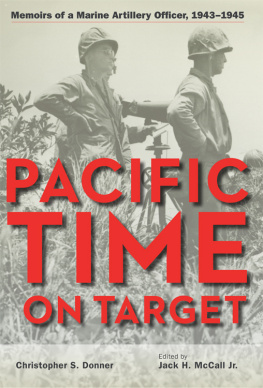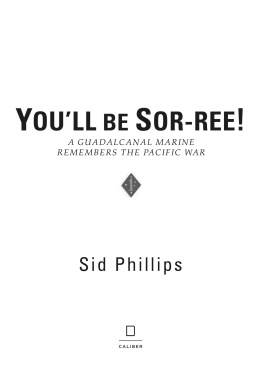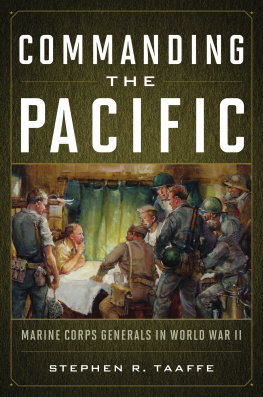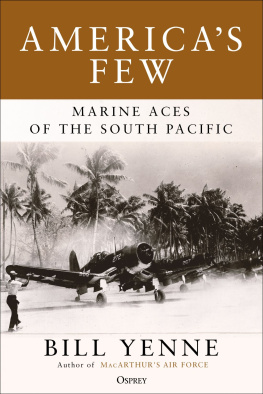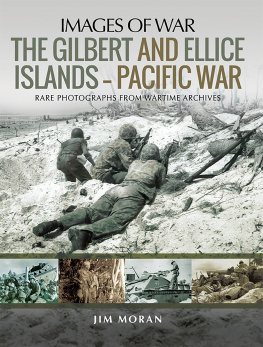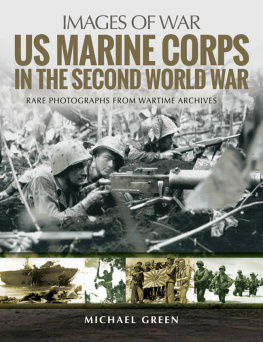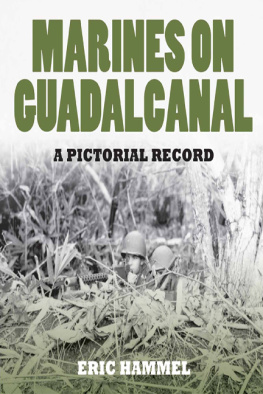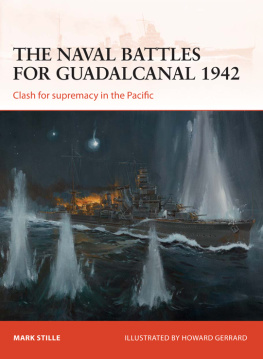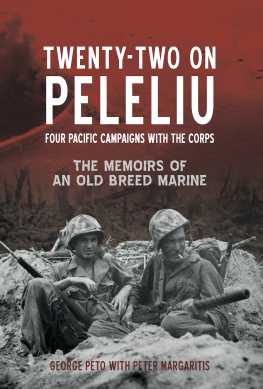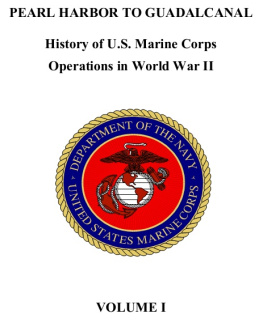Christopher Donner - Pacific Time on Target: Memoirs of a Marine Artillery Officer, 1943-1945
Here you can read online Christopher Donner - Pacific Time on Target: Memoirs of a Marine Artillery Officer, 1943-1945 full text of the book (entire story) in english for free. Download pdf and epub, get meaning, cover and reviews about this ebook. year: 2012, publisher: The Kent State University Press, genre: Non-fiction. Description of the work, (preface) as well as reviews are available. Best literature library LitArk.com created for fans of good reading and offers a wide selection of genres:
Romance novel
Science fiction
Adventure
Detective
Science
History
Home and family
Prose
Art
Politics
Computer
Non-fiction
Religion
Business
Children
Humor
Choose a favorite category and find really read worthwhile books. Enjoy immersion in the world of imagination, feel the emotions of the characters or learn something new for yourself, make an fascinating discovery.
- Book:Pacific Time on Target: Memoirs of a Marine Artillery Officer, 1943-1945
- Author:
- Publisher:The Kent State University Press
- Genre:
- Year:2012
- Rating:3 / 5
- Favourites:Add to favourites
- Your mark:
Pacific Time on Target: Memoirs of a Marine Artillery Officer, 1943-1945: summary, description and annotation
We offer to read an annotation, description, summary or preface (depends on what the author of the book "Pacific Time on Target: Memoirs of a Marine Artillery Officer, 1943-1945" wrote himself). If you haven't found the necessary information about the book — write in the comments, we will try to find it.
The gritty combat memoir of a Marine Corps artilleryman and forward observerAs a married man and Stanford graduate student nearing thirty, Christopher Donner would likely have qualified for an exemption from the draft. Like most of his generation, however, he responded promptly to the call to arms after Pearl Harbor. His wartime experiences in the Pacific Theater were seared into his consciousness, and in early 1946 he set out to preserve those memories while they were still fresh. Sixty-five years later, Donners memoir is now available to the public.During the spring of 1943 Donner joined the Marines 9th Defense Battalion and saw his first combat service in the campaign for New Georgia in the Solomon Islands. Due to a large Japanese airfield threatening several Allied bases, New Georgia was the next island group targeted for the Allies post-Guadalcanal operations. Donners account of the fight for New Georgia is replete with images of lush tropical lagoons and groves shredded by American artillery bombardments and Japanese air raids. With the end of Japanese resistance in the Central Solomons, Donners battalion was dispatched in June 1944 to serve in the liberation of the U.S. territory of Guam.
When his unit was deactivated and its veterans sent home, Donner was not so fortunate.In early 1945, Donner was reassigned to the 11th Marines, the 1st Marine Divisions field artillery. His new commander decreed that Donner would serve as a field artillery forward observerjust in time for the invasion of Okinawa. Teeming with close calls and near misses, frank yet sensitive observations of the brutality visited on Okinawas civilians, and the horrors of frontline combat, Donners account of his service with the Old Breed on Okinawa forms the core of his memoir. Donners FO team accompanied both Marine and Army infantrymen into the bitter fighting at Wana Ridge, the Dragons Tooth, and Shuri Castle. Miraculously unscathed by the Okinawa bloodbath, Donner was en route to California for his first opportunity for leave when he learned of the atomic bombs and wars end.Besides providing a candid, moving contemporary record of the combat experiences of a Marine Corps officer, Pacific Time on Target is an invaluable account of the harrowing life of an artillery forward observer, as few of these men survived to tell their stories. It will appeal to military historians and general readers alike.
Christopher Donner: author's other books
Who wrote Pacific Time on Target: Memoirs of a Marine Artillery Officer, 1943-1945? Find out the surname, the name of the author of the book and a list of all author's works by series.

